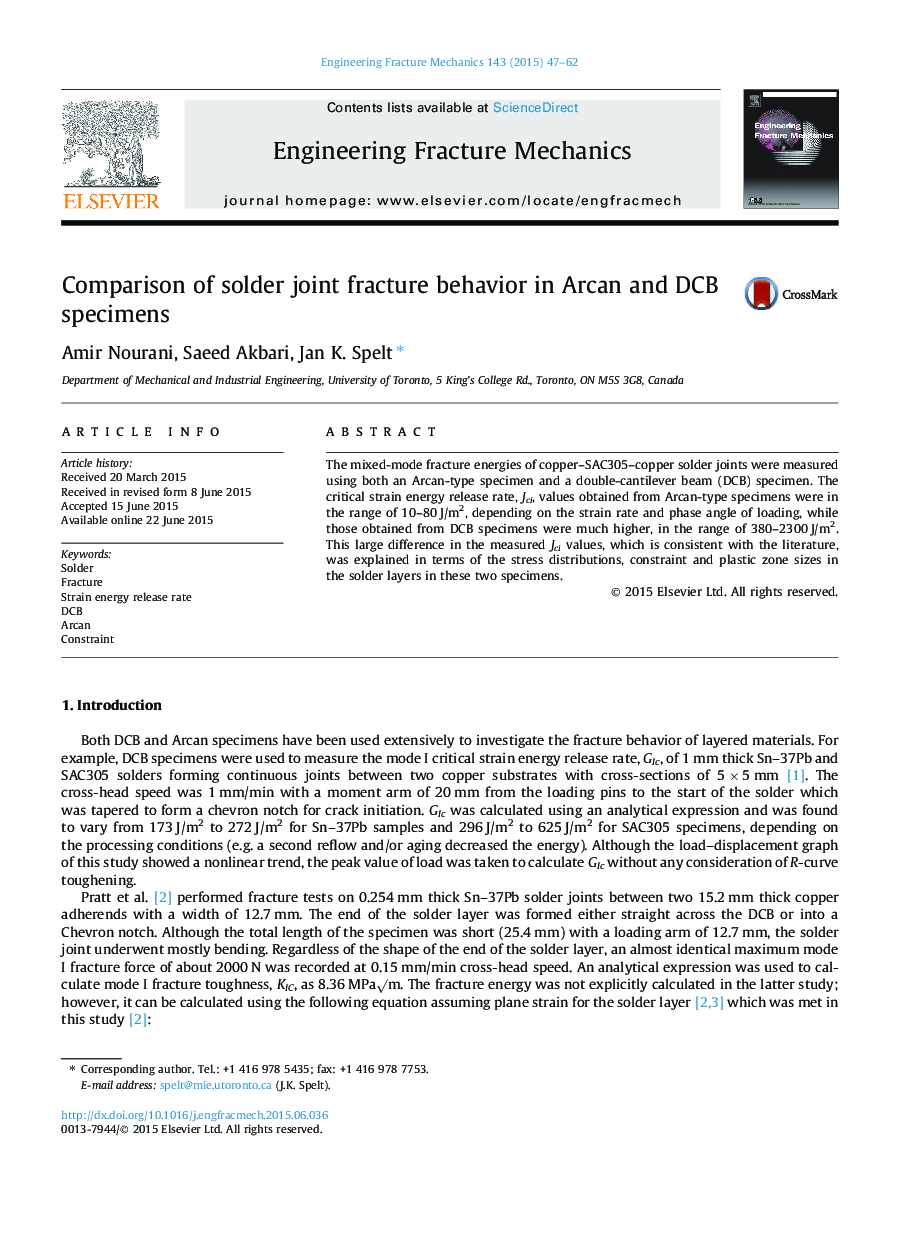| Article ID | Journal | Published Year | Pages | File Type |
|---|---|---|---|---|
| 770239 | Engineering Fracture Mechanics | 2015 | 16 Pages |
•Solder joints tested using Arcan and DCB specimens.•The effects of phase angle and strain rate were consistent for both specimens.•A marked difference in the initial fracture energy of two specimens was observed.•Distributions of stress and triaxiality factor were dissimilar in the two specimens.•Yielding was much more extensive in the DCB solder layer.
The mixed-mode fracture energies of copper–SAC305–copper solder joints were measured using both an Arcan-type specimen and a double-cantilever beam (DCB) specimen. The critical strain energy release rate, Jci, values obtained from Arcan-type specimens were in the range of 10–80 J/m2, depending on the strain rate and phase angle of loading, while those obtained from DCB specimens were much higher, in the range of 380–2300 J/m2. This large difference in the measured Jci values, which is consistent with the literature, was explained in terms of the stress distributions, constraint and plastic zone sizes in the solder layers in these two specimens.
